|
43. Satyrium acaciae (Fabricius, 1787) / Sloe hairstreak / Lycaenidae – Theclinae
NL: kleine sleedoornpage/ D: Akazien-Zipfelfalter, Kleiner Schlehen-Zipfelfalter, Krüppelschlehen-Zipfelfalter / F: thécla de l'acacia, la thécla de l'amarel
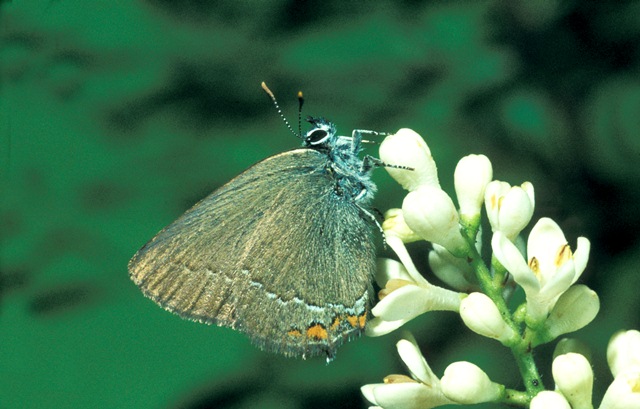 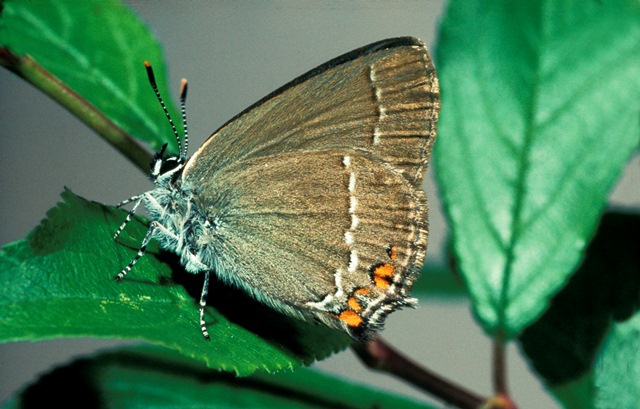 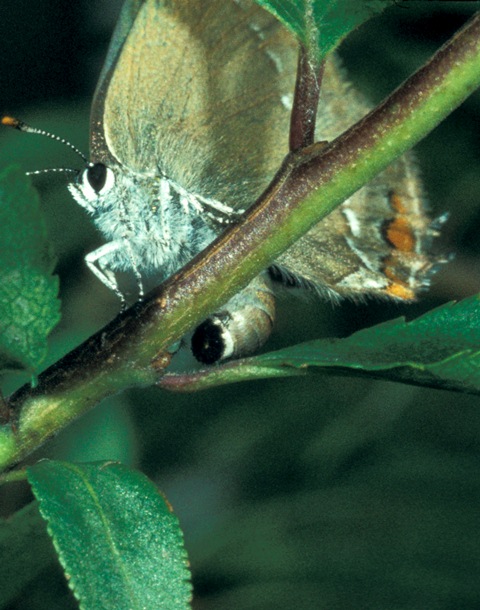
Photographs: Frits Bink ©.
Very small or small, wing length 13 (12-14) mm. In the Benelux, the species used to occur in the extreme southeast of Wallonia, near the French border, until 1972, after which time there have been no reports. In France it is known from landscapes in the gradient between grassland and scrubland and from abandoned arable field with shrubs of sloe.
Butterfly is on the wing from mid-June until end-July and peaks early-July. It occurs in sub-continental and continental climates, amplitude 7 to 16. Required heat sum is 900°d and maximum tolerated 1800°d, corresponding climate windows are 26 and 36 weeks.
The species has a remarkable behaviour, not known in other species of Theclinae, the female covers the eggs with black hairs and scales from the tip of the abdomen.
Ecological characteristics
Behaviour over time
Overwintering: egg on a twig of the host.
Reproduction: oviposition starts after 5-6 days when the body contains 38 (29-51) eggs, estimated potential 1.7 times as much.
Larval feeding periods: 5 weeks in the period from end-April until mid-June.
Generations: always one.
Spreading of risk: not observed.
Life cycle: egg 41-46 weeks; larva 35 (31-52) days; pupa 17 (14-21) days.
Life span of adult: short, 2 weeks.
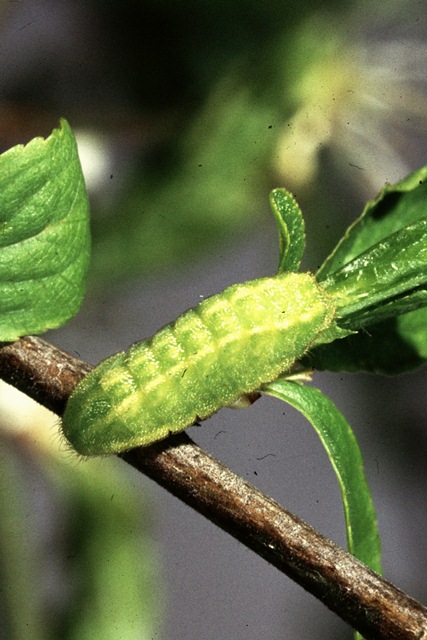 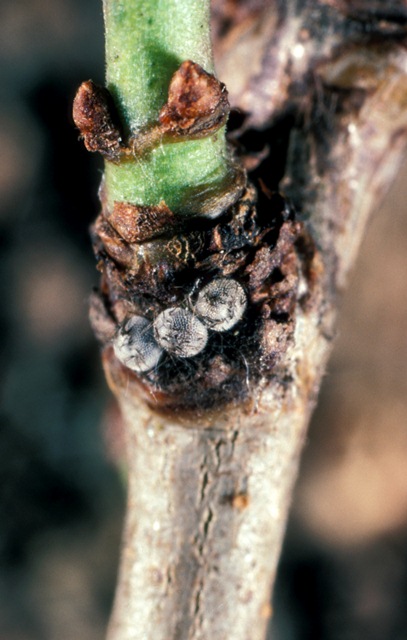
Photographs: Frits Bink ©.
Behaviour in space
From stay-at-home to migrant: stay-at-home, spatial requirement very modest.
Finding a mate: males behave territorially most of the time, but may sometimes congregate on a prominent bush.
Orientation in the landscape: open landscape with sloe bushes.
Oviposition: on twigs of the host, near notches and buds, a few eggs together upon which hairs from the female’s abdomen are deposited.
Defence
Threats from other organisms: no special defence organs, vulnerable from avian predation.
Myrmecophily: weak, ants inspect the larvae only a short time.
Threats from the environment: the species is known from warm and dry sheltered sites, so it will be vulnerable to cold and humid weather.
Feeding habits
Adult: honeydew and nectar of flowers of bushes such as privet and bramble.
Larva: egg hatches before bud burst, changes in appearance adapted to the development of the larval host-plant.
Larval foodplants
Plant species: Rosaceae, Prunus spinosa.
Journal
Rearing experiment based on specimen from le Zinnkoepfle, Vosges, France:
10 July 1984: three females captured.
14 July: first eggs laid on potted sloe bush.
7 August: 30 eggs observed.
Overwintered outdoors.
30 March 1985: about 20 eggs hatched, the buds of the sloe began to burst.
2 April: last remaining eggs hatched.
10 April: biggest larva end L2, larvae consumed buds.
15 April: most larvae mid third instar.
22 April: two larvae L5.
26 April: first larva prepared to pupate on a stone.
3 May: first pupa present.
5 May: three larvae were feeding, others were pupating, pre-pupa phase took about five days.
19May: last larva pupated.
20 May: first adult appeared, male.
21 May: second and third ones hatched, males.
28 May: last pupa hatched, female.
31-5-85: copulation observed.
Table 43-1. Results of dissections

Table 43-2. Collection and observation localities
D, Arnstein 50° 01’ 57”N – 9° 47’ 41”E; 22July 1984.
F, Lorraine, Jaulny 209 m, 48° 57’ 55”N – 5° 52’ 52”E; 29 June 2002, 8 July 2006.
F, Lorraine, Rupt devant Saint-Mihiel 280 m, 48° 53’ 01”N – 5° 24’ 10”E; 28 June 2006.
F, Vosges, Bollenberg 363 m, 47° 56’ 54”N – 7° 15’21”E; 25 July 1983.
F, Vosges, le Zinnkoepfle 481 m 47° 57’ 56”N – 7° 15’ 08”E; 10 July 1984.
Fig. 43-1. Satyium acaciae, phenogram adapted from Ebert & Rennwald 1991a: 176.
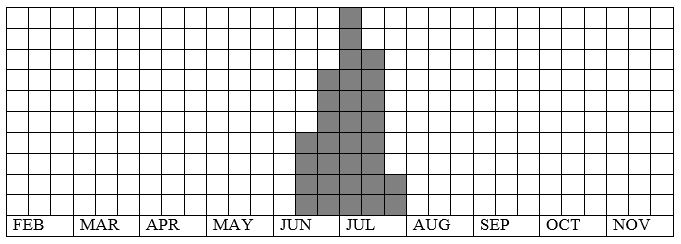
Fig. 43-2. Satyium acaciae, habitat characteristics.
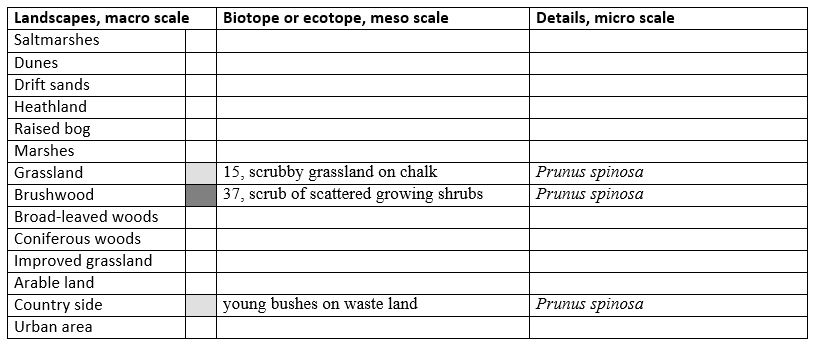
Fig. 43-3. Satyium acaciae, climate matrix, heat-sums 900 - 1800°d.
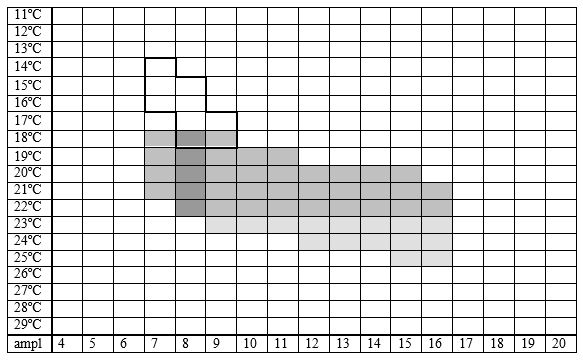
|










